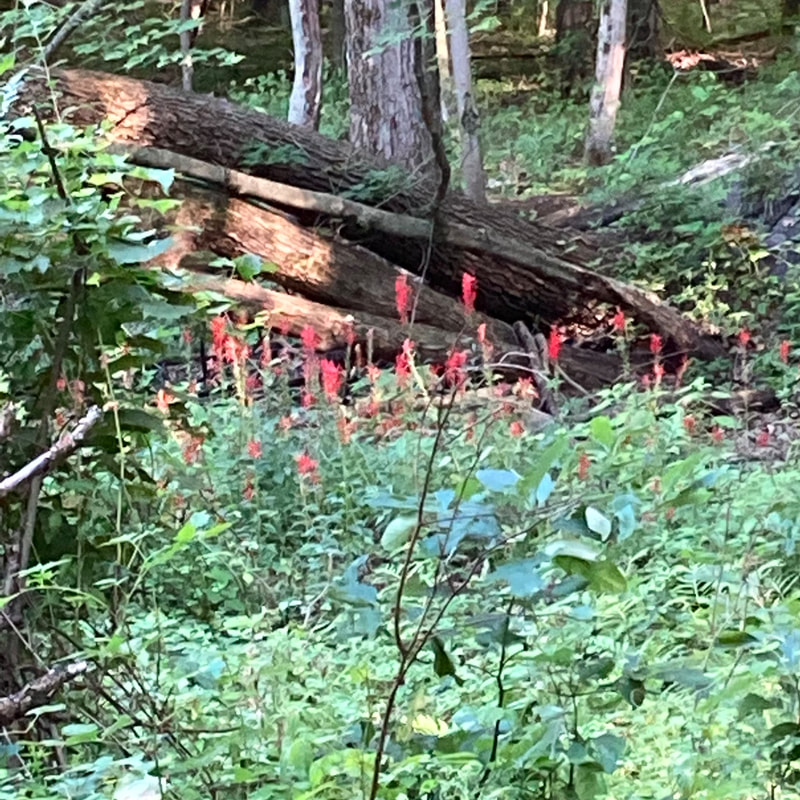|
Photo and article by Donna Iverson In late summer, a bright red flower can be sometimes seen along rivers, streams and vernal ponds. It’s rare, and it’s a Michigan native called Cardinal Flower. As wetlands have faced threats to their survival, so has the Cardinal Flower, which needs moist soil to thrive. It is on the threatened list in several states including Florida and Arizona. Spotting it in the wild is a rare treat this time of year. And while it does grow in the wild, it is also possible to buy nursery plants in the fall or grow it from seed in the spring. A member of the Bellflower family (Campanula), Cardinal Flower grows fast and blooms the first year after it is planted. It attracts hummingbirds but not bees as the lipped flower has no “landing pad” for them. Varieties available at plant nurseries include Queen Victoria and Black Truffle. In winter, Cardinal Flower is just a basal rosette lying close to the ground. In spring, it sends up flower shoots that measure three to six feet tall. Pollinated mostly by hummingbirds, its multi-lipped crimson flowers appear in late summer and continue to bloom into the fall. While you might think it is named after the cardinal bird, it is in fact named after the bright robes of Catholic cardinals and in honor of the medieval Flemish botanist Matthew de L’ Obel. Note: The plant is toxic to humans and pets.
0 Comments
Your comment will be posted after it is approved.
Leave a Reply. |
Archives
July 2024
Categories |

 RSS Feed
RSS Feed